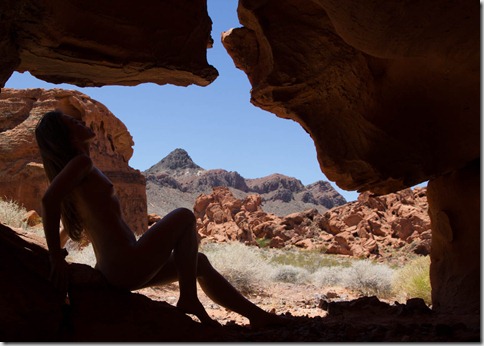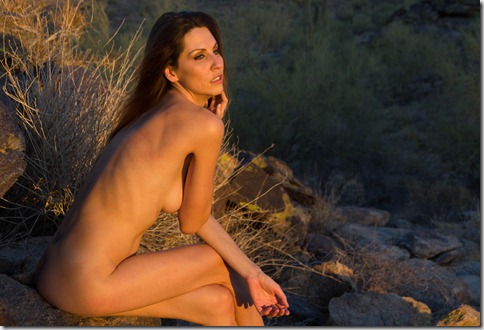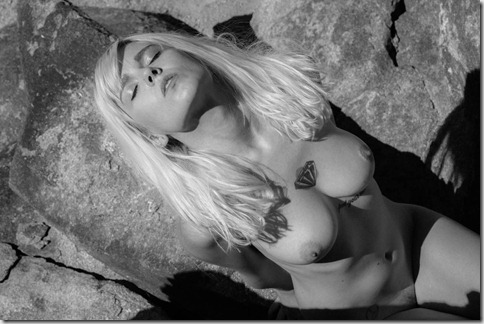My recent trip out to the southwest gave me the first opportunity to try shooting in a new environment, the desert. I’m no stranger to outdoor shooting, as even a quick glance through my posts and gallery will demonstrate, but this was a very different environment, both in the obvious of few trees and little water, but in more subtle ways such as the way the sun interacts with the landscape. So I thought I’d not a few observations of the differences between working in Arizona and Nevada compared to my normal Tennessee and North Carolina locations.
As always these are just my observations from a couple weeks in early June. It will definitely will be hotter if you go in July or August where I’m not sure I’d even go outside during the noonday sun. It will also likely be more humid then too. In the winter it will be completely different I’m sure. In other words before taking this as gospel, check a weather forecast.
The Desert is Hot and Dry
 I know you’re thinking, “No kidding.” Still it’s one thing to read or hear that the weather is hot and dry, but it’s a different thing to be standing out in that weather. I was fortunate during my trip that the weather was actually a little cooler than normal, but still 100 degree heat is nothing to dismiss. I will note though there is a notable difference between the humid heat where I normally work and the dry heat of the southwest. I felt more comfortable at 100 degrees in Arizona early this month than I have in Tennessee this week at ninety degrees with the higher humidity.
I know you’re thinking, “No kidding.” Still it’s one thing to read or hear that the weather is hot and dry, but it’s a different thing to be standing out in that weather. I was fortunate during my trip that the weather was actually a little cooler than normal, but still 100 degree heat is nothing to dismiss. I will note though there is a notable difference between the humid heat where I normally work and the dry heat of the southwest. I felt more comfortable at 100 degrees in Arizona early this month than I have in Tennessee this week at ninety degrees with the higher humidity.
That said, it’s still hot and potentially dangerously so. And the dry air means that water just leaves your body in no time. You sweat and it evaporates. This does make you feel a little cooler, but it also means that drinking water is a constant necessity outside. My sinuses dried out in minutes. I have a daypack that I normally take when hiking or shooting around home that holds 3L of water. I normally can come back from a full day outdoors with water left in the pack. While shooting out west I normally drank somewhere between 3/4 and a liter or water per hours while hiking or shooting in the desert. If you take one piece of advice from this, drink lots of water.
The Sun
I’d in fact say the biggest change for me wasn’t the heat or the dry air, but the lack of shade. I normally shoot in forests where trees 100+ feet tall are the norm around you. Outside of the higher elevations above 5,000 feet like the Colorado Plateau I’m not sure I saw any plant even fifty feet tall. Most plant life is brush with a height measured in inches. What few tall plants exist are narrow. The result is that shade is rare and shade big enough to put a person into, either yourself or a model, is even harder to find. Clouds are almost non-existent. I think I was out west for five days before I saw a cloud, a small whispy puff of white at the side of a mountain in Utah as I was driving from the Grand Canyon to Las Vegas.
This will have two direct affects on you as a photographer. The clear, dry air means the sun is there and will beat down on you. If you’re out in the hottest part of the day where the sun is high in the sky there is nowhere to escape from it’s heat. This makes the hot and dry aspect worse on your body and the body of your model. The desert sun also has a very harsh and bright light that makes photographing during the middle of the day largely an exercise in futility. I did one shoot with a model during the late morning to midday. We found some places to work thanks to rocks providing shade, but for shooting in the desert think early or late in the day.
Sunscreen is a requirement. Especially for the fair skinned such as myself.
Light
 As I mentioned, the sun when high in the sky is harsh and terrible for photographing a model. With little hope of overcast, you’re only option is to find shade. Fortunately there are rocks. In fact I think the rocks are the best feature of the southwest landscape. For the times I was out in the harsher sun, I was mostly able to find locations to work around rock formations. If you’re forced by scheduling to work during the middle of the day, look for a location with rocks formations.
As I mentioned, the sun when high in the sky is harsh and terrible for photographing a model. With little hope of overcast, you’re only option is to find shade. Fortunately there are rocks. In fact I think the rocks are the best feature of the southwest landscape. For the times I was out in the harsher sun, I was mostly able to find locations to work around rock formations. If you’re forced by scheduling to work during the middle of the day, look for a location with rocks formations.
The light during golden hour, the time right before and right after either sunrise or sunset, is simply gorgeous though. The things that make the midday sun so annoying work to make this late light wonderful. I can say that the golden hour light in the southwest would probably be the most enjoyable and wonderful natural light that I’ve worked in.
Privacy
There’s not a lot of people in the desert. The big cities are big, Phoenix and Las Vegas for example, but in between cities there is a lot of wide open space. Compare that to my area where you come through a small town or city every few miles on the major highways. Out west it’s not uncommon to drive hours and not see a group of more than a hundred people together. In short it’s a lot easier to find nice private places for shooting.
Visuals
The terrain just looks different. Water is so rare those westerns where people fought wars over it now make a lot more sense. The deep green colors are rare with browns and muddy green more common. Mountains look totally different without the green. The novelty is part of the appeal, but I really think there is something I love about the different landscape and the vast openness. I’m already looking forward to my next trip back. Coming up over the next couple weeks expect to see more photos from my desert shoots including those previewed in this post.
Other Thoughts
 All the models I worked with were locals and knew more about posing nude in the desert than I did. All brought water to drink and stayed out of the sun as much as possible when not posing or until it lost much of its force. My biggest concerns for a model or photographer working in the environment for the first time would be not drinking enough water and the sun on exposed skin. I kept pretty well covered in sunscreen while outdoors, but did redden just a bit on my last shoot which ended in the full force of the midday sun. I drank plenty, but still felt like I got behind a few times. Plenty of water is the one thing I cannot overemphasize as the heat and dryness really pull water out of the body.
All the models I worked with were locals and knew more about posing nude in the desert than I did. All brought water to drink and stayed out of the sun as much as possible when not posing or until it lost much of its force. My biggest concerns for a model or photographer working in the environment for the first time would be not drinking enough water and the sun on exposed skin. I kept pretty well covered in sunscreen while outdoors, but did redden just a bit on my last shoot which ended in the full force of the midday sun. I drank plenty, but still felt like I got behind a few times. Plenty of water is the one thing I cannot overemphasize as the heat and dryness really pull water out of the body.
I also would suggest really focusing on the times around sunrise or sunset not just for the great light, but to give the best conditions. It’s cooler and the sun is just too fierce and harsh to easily work during the middle of the day. I’m also looking forward to trying some light painting my next trip out there.
Wildlife is another concern. The desert of course holds several animals you’d prefer not to meet such as the rattlesnake and scorpion. Thankfully I saw none of those while out shooting or hiking. My personal favorite was the yellow signs similar to the ones we commonly see in the east warning of deer. I saw plenty warning me to watch for bison or elk in the road. Then as I travelled through the higher elevations of central Arizona I saw one warning me to watch out not for buffalo or elk, but mountain lions for the next ten miles.
I stayed in my car the next ten miles. And a few more after that.
In conclusion I loved the desert as a location. I’m already looking at planning a trip back outside of summer to shoot among a few other adventures I’ve planned. Like any other location there are precautions and challenges, but the rewards are worth them. A lot of common sense goes a long way as with any outdoor work.